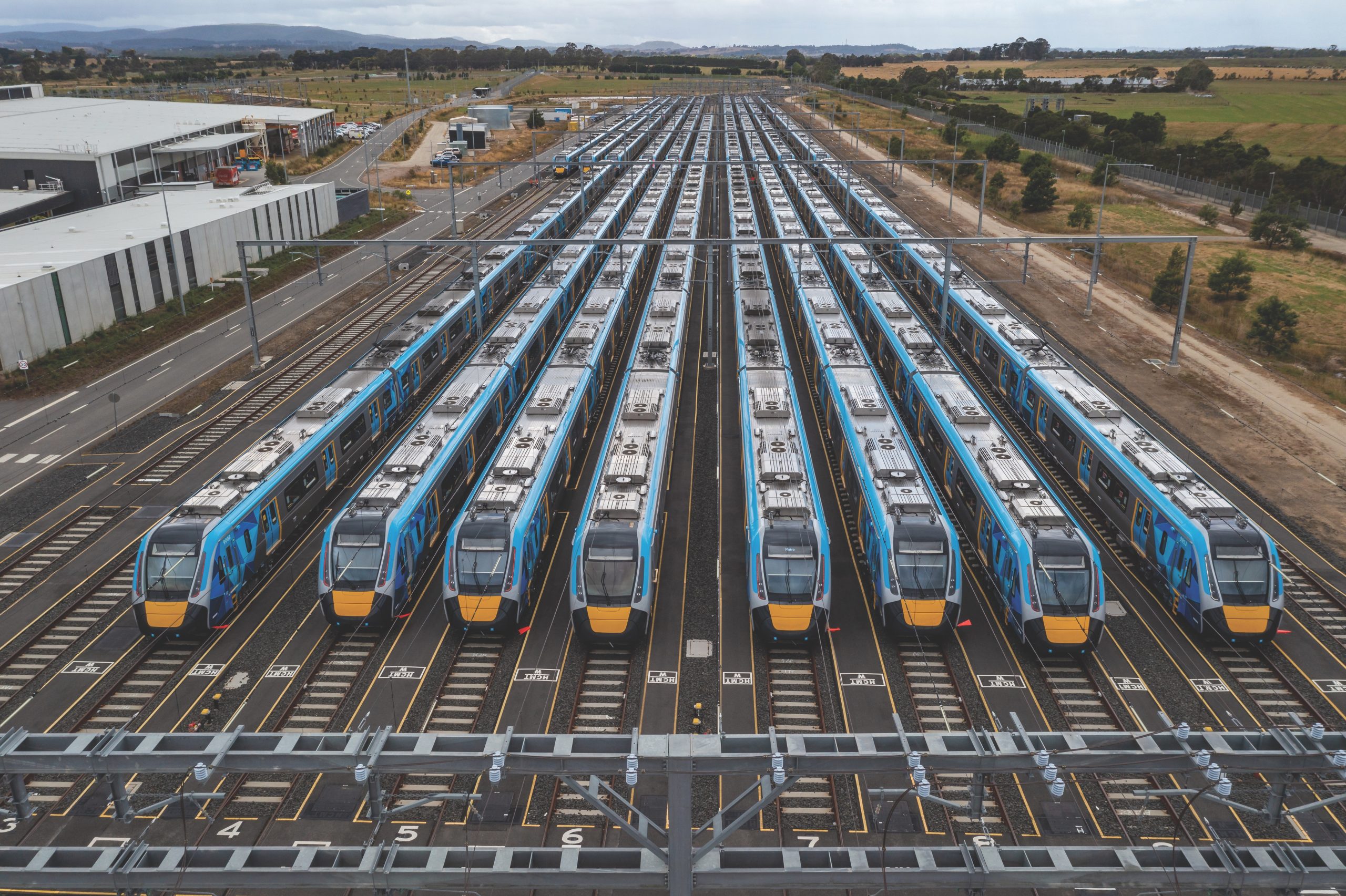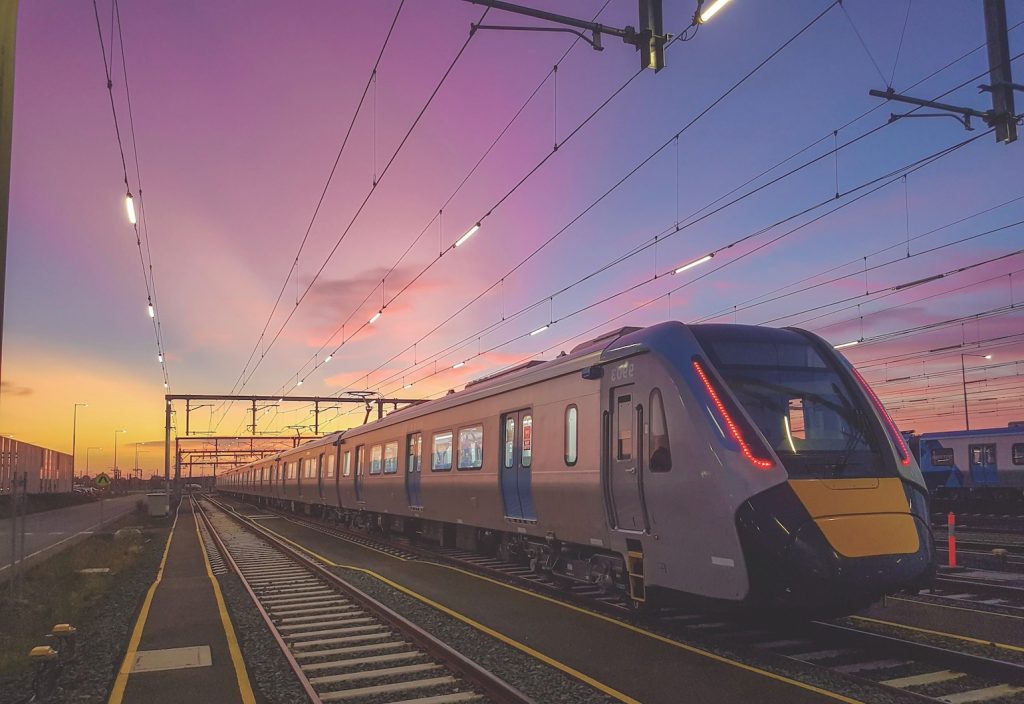More than 200 engineers at Downer’s rail and transit systems are part of a credentialing push to ensure they can provide the highest level of engineering solutions, staff and customer safety and client confidence.
Before she earned Chartered status with Engineers Australia, Sagarika Das CEngT wasn’t quite sure of its value. After all, she had worked in India, the US and Australia in senior positions on major engineering projects in automotive and rail for 16 years.
But after completing the credentialing process, Das wondered why she didn’t seek Chartership sooner.
“Now that I have my credentials, I can see the importance the industry is placing on them. It makes me feel very happy and proud that I have earned Chartered status, and I wonder why I didn’t do it earlier,” says Das, who until recently was Senior Systems Integration Engineer at Downer’s Rail and Transit Systems (RTS)
“It really does demonstrate your growth in knowledge through the work you have done, and it’s a real value addition for the individual, for their client and for their employer.”
After three years in the automotive industry, Das made the leap to locomotives when she accepted an appointment at GE Transportation. She has been deeply involved with all types of rolling stock ever since.
“As part of my GE career I worked with Rio Tinto in Karratha and in their Melbourne office,” she says. “Then I moved to Downer’s HCMT project four years ago.”
Focus on the future
The HCMT — high-capacity metro trains — project is the first new train design in Victoria in nearly 20 years. The Victorian Government initially ordered 65 trains as part of the largest single order of trains in the state’s history.
The investment of more than $2.3 billion, which has now expanded to add five more trains to the order, includes a new maintenance facility in Pakenham East and a light service facility in Calder Park. The fleet is being built using at least 60 per cent local content and has produced more than 1100 jobs in Victoria.
Das has been working on the requirements and integration of the various systems of the HCMT project. Her current focus is the integration of the high-capacity signalling system on the HCMT.

The HCMT is one of the first operational trains on the network to be fitted with high-capacity signalling for use in the Metro Tunnel, enabling more trains to run more often and travelling at intervals of just two to three minutes.
“This is the first time we’re integrating high-capacity signalling trains in Australia, and it has been a huge learning curve,” Das says.
“It’s very exciting to be supporting the signalling side: working with future technology to create the tunnel of the future.” What exactly is the tunnel of the future?
It’s one with bigger platforms that can accommodate more people and longer, 10-car trains. It has platform screens with doors that the trains’ doors will line up with perfectly, keeping passengers on and off the trains safe at all times. And its technology allows trains to operate safely with more frequency.
The trains are loaded with technology. This includes condition monitoring technology, which allows the tracking of the train’s condition in real time. Train movement on all sections of the track will be optimised, meaning trains will communicate with each other to ensure optimal speeds and fewer delays on all parts of the network, and platform information will be relayed to train operators.
“It is very exciting work, and it is very engaging work,” Das says. “Does it ever get boring? Never!”
Getting credentialed
The partnership between Downer RTS and Engineers Australia was created to support the credentialing of engineers and engineering technologists, and Das says the process of becoming Chartered has been significantly streamlined.
“You still have to present lots of CPD [continuing professional development] logs, which is very important,” she says. “But the process is very focused. There is a lot of importance placed on the work you’ve done and the growth you’ve achieved through experience and CPD.”
While the past three years are in sharpest focus, the process helps an engineer to appreciate the knowledge they have built over their entire career.
But the accreditation is not just about the individual. It also lifts levels of safety during construction, and for customers once the project is complete by ensuring those who recognise best practice are leading the project.
“I have a career span of 16 years across three continents,” Das says.
“Even though the CPD logging was for only three years, you also have to write bullet points around case studies and experience.
“For this, I had to look back over my entire career, just to appreciate how I developed this knowledge … The fact that the company was backing me helped a lot. It gave me great confidence that the right people would appreciate the right experience and knowledge.”
Confidence to succeed
At the other end of the process, Lead Configuration Engineer Maria Mochales MIEAust is about to begin her credentialing.
The fact that her organisation is providing support, and that Engineers Australia has partnered with Downer to assist, gives her great confidence.
“I currently only work three days per week,” she says, describing the levels of flexibility and diversity Downer RTS has managed to achieve.
“I have a one-year-old child, so I don’t have a lot of extra time in my life. But being Chartered is an important recognition of engineering knowledge and experience, so it’s okay that it’s not something that happens overnight … the fact that my employer is giving me this opportunity, and also doing it with Engineers Australia, means the process is very clear and you always understand exactly what you need to do next.
“It will be a lot more straightforward than doing it on my own, including the fact that I’ll be able to do some of it at work.”
Mochales, like Das, comes from an automotive background. She spent several years in California with Tesla as a Senior Quality Engineer, and has worked with towing, trailer and cargo management business Horizon Global and Nissan Motor Australia.
At Downer RTS, Mochales works in the state-of-the-art and purpose-built Pakenham East Depot, where the testing and commissioning of the HCMTs are carried out.
Her role is to control configuration changes during the testing and commissioning phase of the HCMTs, including analysing any potential ripple effects of various engineering changes, and ensuring those changes are rolled out to all trains at all stages of production.
“No matter what engineering role I’m carrying out, Chartership will help me in numerous ways,” Mochales says.
“Downer works on projects across all of Australia and there are some states that require Chartership to practise as an engineer at a certain level … It means I’ll be able to consider those opportunities. Chartership is a very good thing.”
